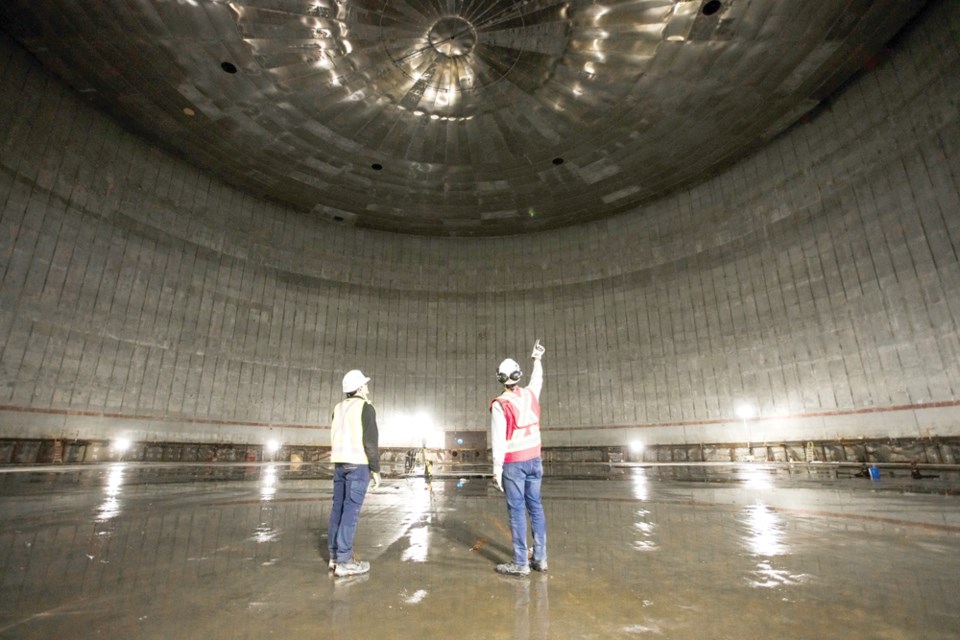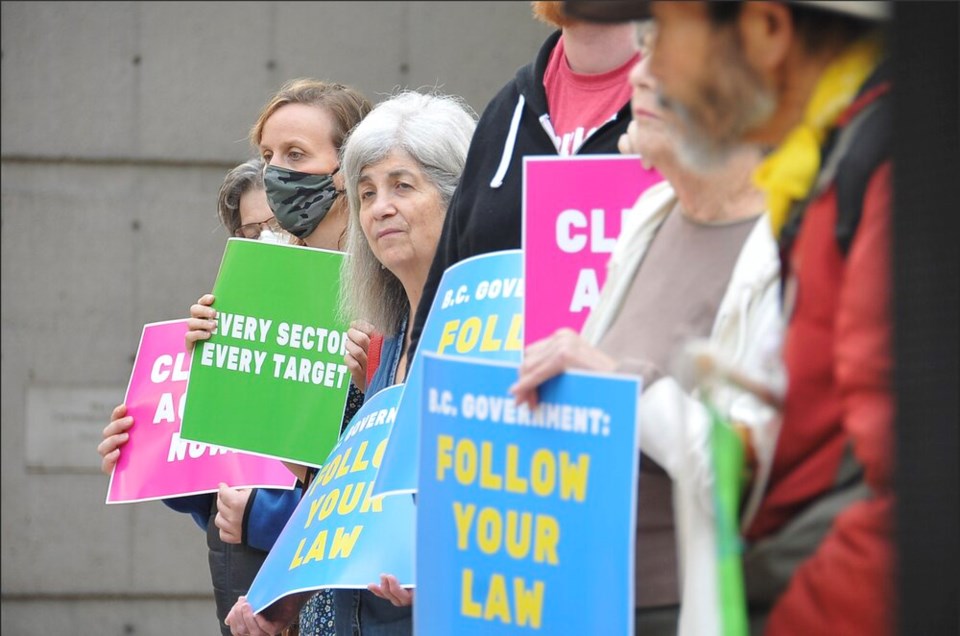Courts have no jurisdiction to decide whether the B.C. government’s climate plans are transparent enough, argued government lawyers in a Vancouver Supreme Court Wednesday.
Lawyers for the Sierra Club BC had before Justice Jasvinder Basran that the government’s latest report on how it would achieve its emission reduction targets didn’t go far enough.
In a request for judicial review, Sierra Club lawyer Andhra Azevedo said the province had essentially laid out a “vague plan to make a plan” and offered insufficient information to allow a voter to gauge how the province would meet its future emission reduction targets.
Last year, the ministry released plans to reduce emissions in the province to 40 per cent below 2007 levels by 2030. It said the province would achieve that goal through two climate plans: would get the province 40 per cent of the way there, and would make up the difference.
But lawyers for the environmental group argued the province has failed to do the same for its emission reduction targets in 2025, 2040 and 2050.
As Azevedo put it, “Essentially, they’re saying, ‘trust us.’”
Climate change plan a political process, say government lawyers
In response Wednesday, B.C. Ministry of Justice lawyer David Cowie cast the call for a detailed accounting of how the government would meet its targets as a “technical requirement” better argued on the floor of the legislature than in a courtroom.
That's because emission reduction targets and the plans to achieve them are tabled in the legislature, making the climate policy inherently political, and not something that should be argued before a judge, said the lawyer.
“The basic requirement is to have plans. And [the Sierra Club] is saying, ‘Well, yeah, we know that you can't really go after the substance or the merits of the plan. But there are these subsidiary aspects…” Cowie told the court.
Fossil fuel projects already detailing future emissions, court hears
In a court filing, the Sierra Club lawyers also claim the B.C. government has failed to spell out how it will reach its 2030 emission reduction targets in the oil and gas sector.
While the 2030 Roadmap separates emission reduction targets for transportation and buildings, the plan combines emissions from industry and the oil and gas sector.
Sierra Club lawyers had earlier argued that combining the two sectors makes it impossible to gauge how the province plans to reduce emissions from oil and gas.
Critically, argued Azevedo, as time goes on, a project like LNG Canada may only make up seven per cent of the province’s 2025 target, but by 2050, B.C.’s shrinking carbon budget could mean it would end up accounting for a third of B.C.’s emissions.
In other words, argued the Sierra Club, such fossil fuel projects could lock in emissions and sink future targets. But without more information, British Columbians are left in the dark.

In response, Cowie described the minister's legally required climate reporting as a "work in progress" and one that "is not an exact science."
At the same time, Cowie said someone who wants to find more details on how the province can approve big fossil fuel projects and still meet its climate targets can draw from a number of sources outside the ministry.
A motivated voter could look to environmental applications required to approve fossil fuel projects. In the case of the project in Kitimat, B.C., for example, Cowie presented the judge with documents submitted to the Environmental Assessment Office. In them, the project proponents estimate carbon emissions through the operational life of the project.
Cowie also pointed to the release of the province's annual provincial greenhouse gas inventories — which detail emissions with a two-year delay — and emissions modelling contracted to a third party.
“That information is all publicly available,” he told the court.
Lawyers for the Sierra Club countered that any Environmental Assessment applications for new LNG projects currently can't assess how they might push B.C. past future emission targets.
“If, for example, B.C. is really on track to lower its emissions, it might have a big gap to approve several LNG projects,” said Azevedo. “If, however, B.C. is not on track... then that would make a difference...”
Ultimately, submitted Cowie, the Minister of the Environment and Climate Change Strategy is not legally required to give the kind of detail he provided on how B.C. would hit its 2030 targets. Omitting that level of detail for the 2025, 2040 and 2050 targets was all within the minister's "reasonable discretion," he added.
"There's nothing nefarious going on here."
The judge is expected to rule on the case sometime over the next several months.





